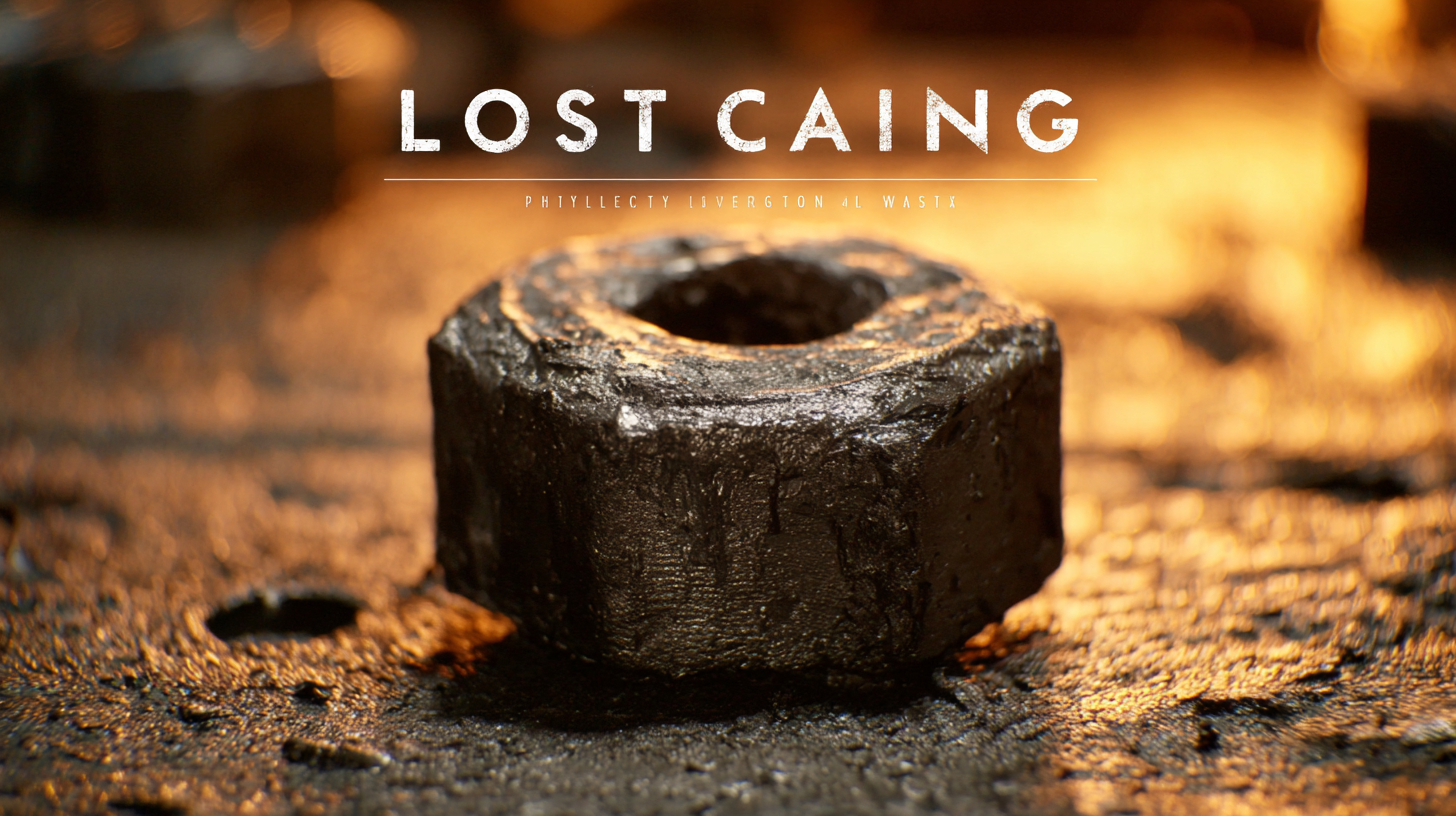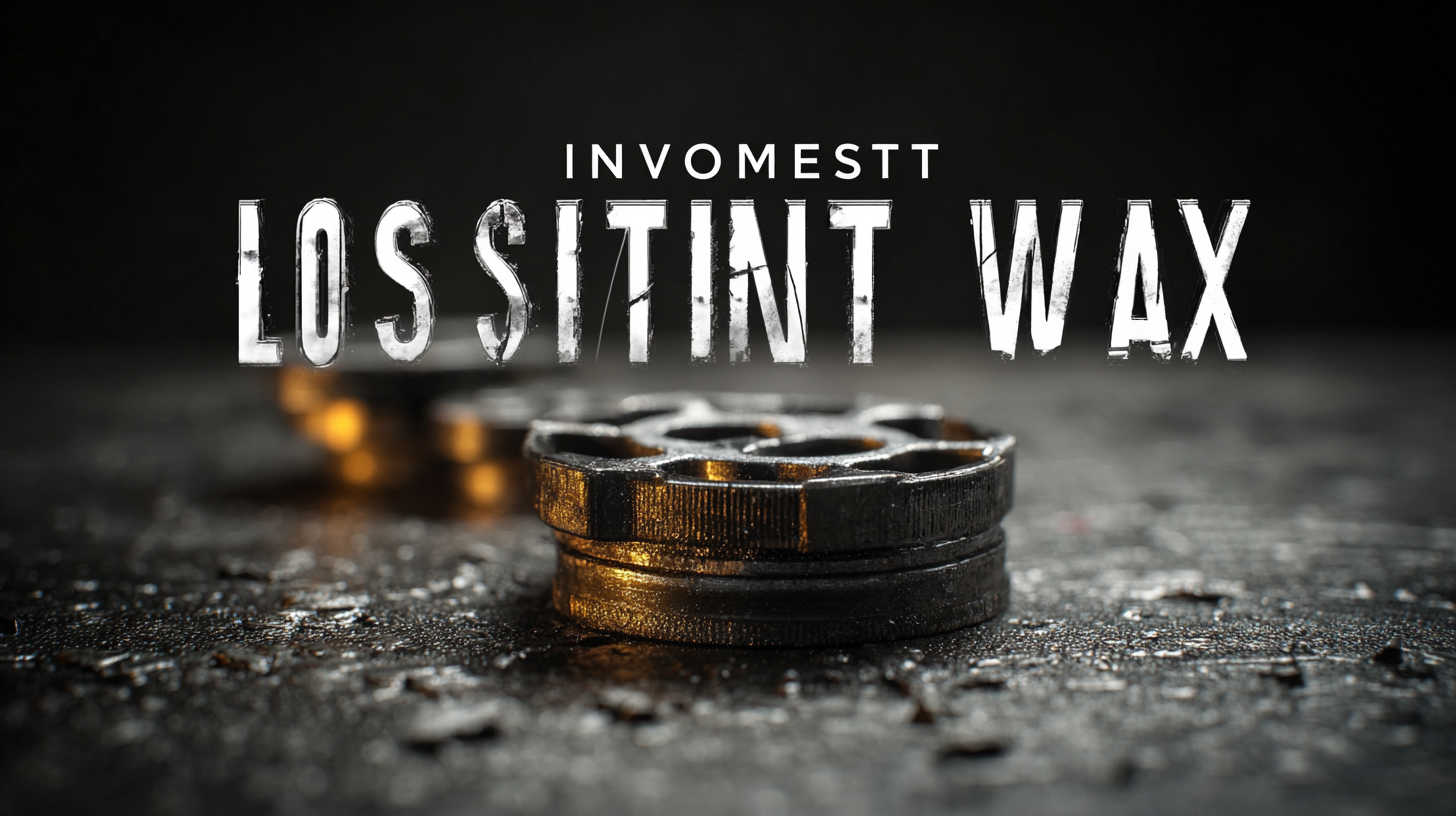 +86 180 0293 5268
+86 180 0293 5268






In the realm of precision manufacturing, the Investment Casting Lost Wax process stands out as a sophisticated technique that promises unrivaled accuracy and detail. This method is especially crucial for industries that demand high-quality components, such as aerospace, automotive, and medical. However, with various options available, selecting the best investment casting service can be a daunting task. To streamline this decision-making process, we present a checklist of five key specifications that differentiate superior investment casting lost wax providers from the rest. By focusing on these essential criteria, manufacturers can ensure they partner with a casting service that not only meets their needs but excels in delivering precision components that are both cost-effective and reliable. Whether you are a seasoned buyer or navigating the investment casting landscape for the first time, understanding these specifications is vital to unlocking the full potential of the investment casting lost wax process.

In the realm of investment casting, achieving dimensional accuracy is paramount to meeting stringent industry standards. One of the primary factors influencing this precision is the control of the wax pattern itself. According to a report by the American Foundry Society, discrepancies in the wax temperature during the molding process can lead to variations of up to 0.5% in the final dimensions. Thus, maintaining a stable and uniform wax temperature is crucial for consistent results.
Another critical specification is the selection of the right ceramic shell material. Studies have shown that the shell's thermal expansion characteristics can significantly impact the casting's dimensional accuracy. For instance, a report published in the Journal of Materials Processing Technology indicates that ceramic shells with lower thermal expansion coefficients yield a 30% improvement in dimensional stability when exposed to the high temperatures of molten metal. This highlights the importance of material choice in investment casting processes, ensuring that precision is not compromised during production.
Moreover, meticulous attention to the design of gating systems plays a vital role in achieving optimal flow rates and minimizing turbulence. A well-designed gating system can reduce defects and improve the overall quality of the cast parts, as highlighted in industry analyses indicating that up to 50% of defects in castings arise from poor gating design. These specifications collectively underscore the essential factors that influence dimensional accuracy in investment casting, guiding manufacturers toward higher-quality outputs.
Material selection is a crucial factor that dictates the performance and cost-effectiveness of the investment casting lost wax process. The choice of materials not only influences the physical properties of the final cast but also plays a significant role in the overall production cost. When selecting materials, it is essential to consider their compatibility with the intended application, as well as their ability to withstand the operational environment. For instance, using high-performance alloys might increase costs but can dramatically enhance durability and efficiency in critical applications.
Tip: Always conduct thorough research on the material properties and previous performance reports to make informed decisions that balance cost and performance.
Additionally, understanding the characteristics of the melting and solidification processes can further refine material selection. Certain metals exhibit better fluidity or solidification rates that can help minimize defects and enhance the final product's quality. Maintaining this balance is key to achieving the optimal casting performance while keeping expenses in check.
Tip: Collaborate with experienced foundry engineers to identify which material options best suit your design specifications and manufacturing capabilities.

The surface finish and tolerances of parts produced through the lost wax casting process are heavily influenced by the mold design. A carefully crafted mold is essential, as it determines the intricacies of the final product. The choice of materials used for mold construction, combined with precise manufacturing techniques, can greatly enhance the detail and smoothness of the casted surface. For instance, a well-designed mold can minimize surface irregularities and achieve tighter tolerances, resulting in components that not only meet aesthetic standards but also functional requirements.
Furthermore, the overall complexity of the mold design plays a crucial role in the casting process. Advanced methods such as computer-aided design (CAD) allow engineers to create intricate molds that can replicate fine details with precision. This complexity enables the production of parts that feature complex geometries without compromising on quality. Ultimately, investing time and resources into optimal mold design is key to unlocking higher precision in lost wax casting, providing manufacturers with the ability to meet stringent specifications in various applications, from aerospace to healthcare.
| Specification | Impact on Surface Finish | Impact on Tolerances | Mold Design Consideration | Recommended Practices |
|---|---|---|---|---|
| Mold Material Type | Directly affects surface smoothness; harder materials yield finer finishes. | Material rigidity impacts dimensional stability during cooling. | Use high-quality materials to prevent defects. | Choose alloys with optimal thermal properties. |
| Mold Thickness | Influences heat transfer rates; thicker molds may lead to rough surfaces. | Thicker molds provide greater dimensional consistency. | Balance thickness for optimal heat control. | Consider using variable thickness designs. |
| Surface Finish Treatments | Post-processing treatments can enhance surface finish quality. | May mitigate minor tolerances through surface adjustments. | Ensure compatibility with chosen casting process. | Implement polishing or coating options as needed. |
| Gateway Design | Can impact the flow of molten material affecting surface finish. | Poor design can lead to increased tolerance issues. | Design with proper angles and dimensions for flow. | Use simulations to optimize gateway configuration. |
| Cooling Rate Control | Direct influence on surface smoothness; faster cooling may lead to rougher finishes. | Highly affects final dimensional accuracy. | Incorporate cooling channels within mold design. | Monitor and adjust cooling rates dynamically. |
When evaluating investment casting techniques, yield rates serve as a critical indicator of efficiency and quality. Recent industry reports indicate that traditional investment casting methods boast yield rates ranging from 70% to 90%, while modern lost wax processes can achieve rates as high as 95%. This discrepancy highlights the advanced capabilities of lost wax casting, particularly in applications requiring intricate designs and precision. By employing advanced molding techniques and materials, manufacturers can reduce waste and improve output, solidifying the lost wax process as a preferred choice for industries such as aerospace and medical device manufacturing.
**Tip:** To enhance yield rates in your casting operations, consider investing in high-quality molds and precise temperature control during casting. These factors can significantly minimize defects and improve overall production efficiency.
Further analysis reveals that the yield rate can also depend on factors such as molten metal quality and cooling mechanisms. For example, utilizing high-purity metals can lead to stronger, more reliable castings, while optimizing cooling rates can reduce the incidence of internal stresses. Reports show that careful management of these elements can elevate yield rates significantly, reinforcing the importance of meticulous process control.
**Tip:** Regularly review your material specifications and ensure that they comply with industry standards. This practice not only supports consistent yield rates but also enhances the durability of the final products.

The investment casting industry has witnessed remarkable advancements in recent years, driven by the emergence of innovative technologies that enhance efficiency and precision. Among these advancements, 3D printing stands out as a game-changer, allowing manufacturers to create complex patterns with unparalleled accuracy. This technology not only shortens the production timeline but also reduces material waste, making it an environmentally friendly alternative to traditional methods. As designers leverage 3D printing for intricate designs, the potential for customization and rapid prototyping expands, catering to the ever-evolving demands of various industries.
Additionally, the integration of automation and smart manufacturing processes has significantly optimized the investment casting workflow. Automated systems streamline production stages, minimizing human error and ensuring consistent quality in every cast. The use of real-time data analytics enables manufacturers to monitor processes proactively, leading to quicker adjustments and enhancements in operational efficiency. This technological synergy not only translates to cost savings but also paves the way for greater innovation in producing complex geometries and high-performance materials, securing investment casting's future in a competitive market.
